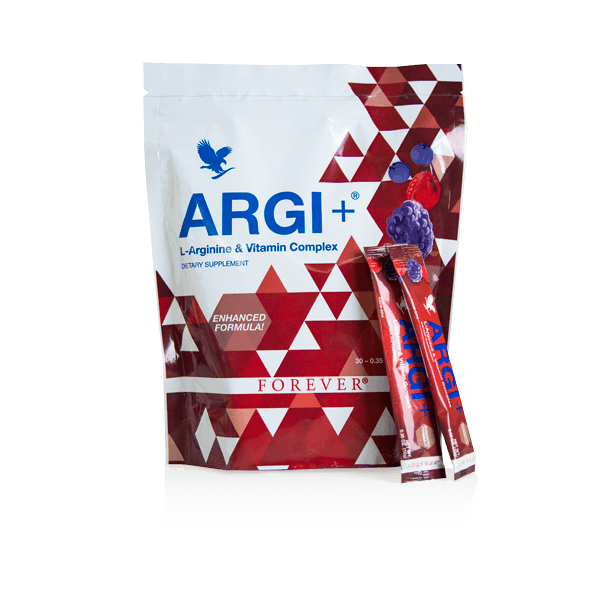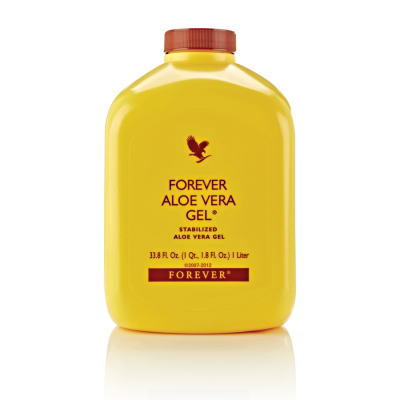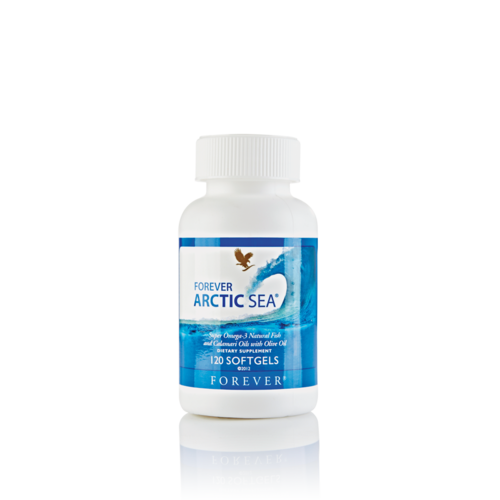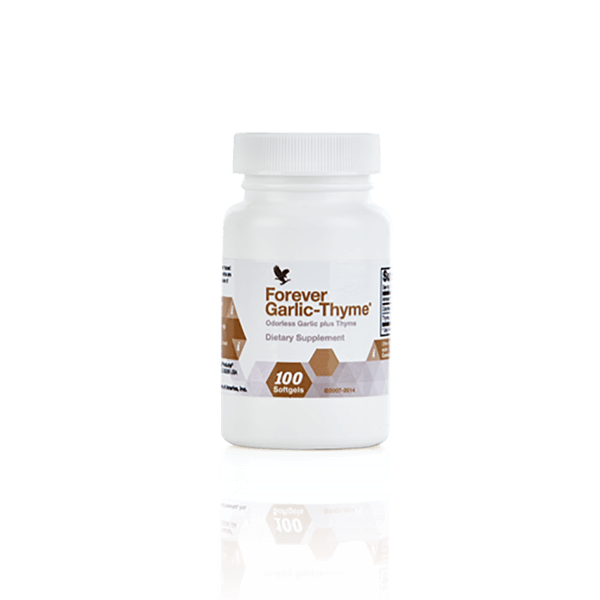A stroke occurs when the blood supply to part of your brain is interrupted or reduced, depriving brain tissue of oxygen and nutrients. Within minutes, brain cells begin to die.
A stroke is a medical emergency. Prompt treatment is crucial. Early action can minimize brain damage and potential complications.
The good news is that strokes can be treated and prevented, and many fewer Americans die of stroke now than in the past.
SYMPTOMS
Watch for these signs and symptoms if you think you or someone else may be having a stroke. Pay attention to when the signs and symptoms begin. The length of time they have been present can affect your treatment options:
- Trouble with speaking and understanding. You may experience confusion. You may slur your words or have difficulty understanding speech.
- Paralysis or numbness of the face, arm or leg. You may develop sudden numbness, weakness or paralysis in your face, arm or leg. This often happens just on one side of your body. Try to raise both your arms over your head at the same time. If one arm begins to fall, you may be having a stroke. Also, one side of your mouth may droop when you try to smile.
- Trouble with seeing in one or both eyes. You may suddenly have blurred or blackened vision in one or both eyes, or you may see double.
- Headache. A sudden, severe headache, which may be accompanied by vomiting, dizziness or altered consciousness, may indicate you’re having a stroke.
- Trouble with walking. You may stumble or experience sudden dizziness, loss of balance or loss of coordination.
WHEN TO SEE A DOCTOR
Seek immediate medical attention if you notice any signs or symptoms of a stroke, even if they seem to fluctuate or disappear. Think “FAST” and do the following:
- Face. Ask the person to smile. Does one side of the face droop?
- Arms. Ask the person to raise both arms. Does one arm drift downward? Or is one arm unable to rise up?
- Speech. Ask the person to repeat a simple phrase. Is his or her speech slurred or strange?
- Time. If you observe any of these signs
CAUSES OF STROKE
A stroke may be caused by a blocked artery (ischemic stroke) or the leaking or bursting of a blood vessel (hemorrhagic stroke). Some people may experience only a temporary disruption of blood flow to the brain (transient ischemic attack, or TIA) that doesn’t cause permanent damage.
Ischemic stroke
- Ischemic stroke
About 80 percent of strokes are ischemic strokes. Ischemic strokes occur when the arteries to your brain become narrowed or blocked, causing severely reduced blood flow (ischemia). The most common ischemic strokes include:
- Thrombotic stroke. A thrombotic stroke occurs when a blood clot (thrombus) forms in one of the arteries that supply blood to your brain. A clot may be caused by fatty deposits (plaque) that build up in arteries and cause reduced blood flow (atherosclerosis) or other artery conditions.
- Embolic stroke. An embolic stroke occurs when a blood clot or other debris forms away from your brain — commonly in your heart — and is swept through your bloodstream to lodge in narrower brain arteries. This type of blood clot is called an embolus.
Hemorrhagic stroke
Hemorrhagic stroke occurs when a blood vessel in your brain leaks or ruptures. Brain hemorrhages can result from many conditions that affect your blood vessels. These include:
- Uncontrolled high blood pressure (hypertension)
- Overtreatment with anticoagulants (blood thinners)
- Weak spots in your blood vessel walls (aneurysms)
A less common cause of hemorrhage is the rupture of an abnormal tangle of thin-walled blood vessels (arteriovenous malformation). Types of hemorrhagic stroke include:
- Intracerebral hemorrhage. In an intracerebral hemorrhage, a blood vessel in the brain bursts and spills into the surrounding brain tissue, damaging brain cells. Brain cells beyond the leak are deprived of blood and are also damaged. High blood pressure, trauma, vascular malformations, use of blood-thinning medications and other conditions may cause an intracerebral hemorrhage.
- Subarachnoid hemorrhage. In a subarachnoid hemorrhage, an artery on or near the surface of your brain bursts and spills into the space between the surface of your brain and your skull. This bleeding is often signaled by a sudden, severe headache. A subarachnoid hemorrhage is commonly caused by the bursting of a small sack-shaped or berry-shaped aneurysm. After the hemorrhage, the blood vessels in your brain may widen and narrow erratically (vasospasm), causing brain cell damage by further limiting blood flow.
Transient ischemic attack (TIA)
A transient ischemic attack (TIA) — sometimes known as a ministroke — is a temporary period of symptoms similar to those you’d have in a stroke. A temporary decrease in blood supply to part of your brain causes TIAs, which may last as little as five minutes.
Like an ischemic stroke, a TIA occurs when a clot or debris blocks blood flow to part of your nervous system — but there is no permanent tissue damage and no lasting symptoms.
Seek emergency care even if your symptoms seem to clear up. Having a TIA puts you at greater risk of having a full-blown stroke, causing permanent damage later. If you’ve had a TIA, it means there’s likely a partially blocked or narrowed artery leading to your brain or a clot source in the heart.
It’s not possible to tell if you’re having a stroke or a TIA based only on your symptoms. Even when symptoms last for under an hour, there is still a risk of permanent tissue damage.
RISK FACTORS
Many factors can increase your stroke risk. Some factors can also increase your chances of having a heart attack. Potentially treatable stroke risk factors include:
Lifestyle risk factors
- Being overweight or obese
- Physical inactivity
- Heavy or binge drinking
- Use of illicit drugs such as cocaine and methamphetamines
Medical risk factors
- Blood pressure readings higher than 120/80 millimeters of mercury (mm Hg)
- Cigarette smoking or exposure to secondhand smoke
- High cholesterol
- Diabetes
- Obstructive sleep apnea
- Cardiovascular disease, including heart failure, heart defects, heart infection or abnormal heart rhythm
- Personal or family history of stroke, heart attack or transient ischemic attack.
Other factors associated with a higher risk of stroke include:
- Age —People age 55 or older have a higher risk of stroke than do younger people.
- Race — African-Americans have a higher risk of stroke than do people of other races.
- Sex — Men have a higher risk of stroke than women. Women are usually older when they have strokes, and they’re more likely to die of strokes than are men.
- Hormones — use of birth control pills or hormone therapies that include estrogen, as well as increased estrogen levels from pregnancy and childbirth.
COMPLICATIONS
A stroke can sometimes cause temporary or permanent disabilities, depending on how long the brain lacks blood flow and which part was affected. Complications may include:
- Paralysis or loss of muscle movement. You may become paralyzed on one side of your body, or lose control of certain muscles, such as those on one side of your face or one arm. Physical therapy may help you return to activities affected by paralysis, such as walking, eating and dressing.
- Difficulty talking or swallowing. A stroke might affect control of the muscles in your mouth and throat, making it difficult for you to talk clearly (dysarthria), swallow (dysphagia) or eat. You also may have difficulty with language (aphasia), including speaking or understanding speech, reading, or writing. Therapy with a speech-language pathologist might help.
- Memory loss or thinking difficulties. Many people who have had strokes experience some memory loss. Others may have difficulty thinking, making judgments, reasoning and understanding concepts.
- Emotional problems. People who have had strokes may have more difficulty controlling their emotions, or they may develop depression.
- Pain. Pain, numbness or other strange sensations may occur in the parts of the body affected by stroke. For example, if a stroke causes you to lose feeling in your left arm, you may develop an uncomfortable tingling sensation in that arm. People also may be sensitive to temperature changes, especially extreme cold, after a stroke. This complication is known as central stroke pain or central pain syndrome. This condition generally develops several weeks after a stroke, and it may improve over time. But because the pain is caused by a problem in your brain, rather than a physical injury, there are few treatments.
- Changes in behavior and self-care ability. People who have had strokes may become more withdrawn and less social or more impulsive. They may need help with grooming and daily chores.
As with any brain injury, the success of treating these complications varies from person to person.
PREVENTION
Knowing your stroke risk factors, following your doctor’s recommendations and adopting a healthy lifestyle are the best steps you can take to prevent a stroke. If you’ve had a stroke or a transient ischemic attack (TIA), these measures might help prevent another stroke. The follow-up care you receive in the hospital and afterward also may play a role as well.
Many stroke prevention strategies are the same as strategies to prevent heart disease. In general, healthy lifestyle recommendations include:
- Controlling high blood pressure (hypertension). This is one of the most important things you can do to reduce your stroke risk. If you’ve had a stroke, lowering your blood pressure can help prevent a subsequent TIA or stroke. Exercising, managing stress, maintaining a healthy weight and limiting the amount of sodium and alcohol you eat and drink can all help to keep high blood pressure in check. In addition to recommending lifestyle changes, your doctor may prescribe medications to treat high blood pressure.
- Lowering the amount of cholesterol and saturated fat in your diet. Eating less cholesterol and fat, especially saturated fat and trans fats, may reduce the plaque in your arteries. If you can’t control your cholesterol through dietary changes alone, your doctor may prescribe a cholesterol-lowering medication.
- Quitting tobacco use. Smoking raises the risk of stroke for smokers and nonsmokers exposed to secondhand smoke. Quitting tobacco use reduces your risk of stroke.
- Controlling diabetes. You can manage diabetes with diet, exercise, weight control and medication.
- Maintaining a healthy weight. Being overweight contributes to other stroke risk factors, such as high blood pressure, cardiovascular disease and diabetes. Losing as little as 10 pounds may lower your blood pressure and improve your cholesterol levels.
- Eating a diet rich in fruits and vegetables. A diet containing five or more daily servings of fruits or vegetables may reduce your risk of stroke. Following the Mediterranean diet, which emphasizes olive oil, fruit, nuts, vegetables and whole grains, may be helpful.
- Exercising regularly. Aerobic or “cardio” exercise reduces your risk of stroke in many ways. Exercise can lower your blood pressure, increase your level of high-density lipoprotein cholesterol, and improve the overall health of your blood vessels and heart. It also helps you lose weight, control diabetes and reduce stress. Gradually work up to 30 minutes of activity — such as walking, jogging, swimming or bicycling — on most, if not all, days of the week.
- Drinking alcohol in moderation, if at all. Alcohol can be both a risk factor and a protective measure for stroke. Heavy alcohol consumption increases your risk of high blood pressure, ischemic strokes and hemorrhagic strokes. However, drinking small to moderate amounts of alcohol, such as one drink a day, may help prevent ischemic stroke and decrease your blood’s clotting tendency. Alcohol may also interact with other drugs you’re taking. Talk to your doctor about what’s appropriate for you.
- Treating obstructive sleep apnea (OSA). Your doctor may recommend an overnight oxygen assessment to screen for OSA — a sleep disorder in which the oxygen level intermittently drops during the night. Treatment for OSA includes oxygen at night or wearing a small device in your mouth to help you breathe.
- Avoiding illegal drugs. Certain street drugs, such as cocaine and methamphetamines, are established risk factors for a TIA or a stroke. Cocaine reduces blood flow and can narrow the arteries.
FOREVER LIVING PRODUCTS FOR STROKE
Forever ARGI+® Stick Packets

ARGI+® provides all the power of L-Arginine, plus pomegranate.
L-Arginine is a potent amino acid that helps to support what scientists refer to as the “Miracle Molecule” – nitric oxide. L-Arginine is converted into nitric oxide in the body, to help support circulation.
Enhanced blood flow supports many important systems in our body:
• Overall cardiovascular systems
• Immune system
• Muscles
• Bone & skeletal system
• Male genitourinary system
• Fat and glucose metabolism
• Metabolism
With so many health benefits, it’s no wonder L-Arginine is generating so much excitement. New ARGI+® provides all the power of L-Arginine, plus pomegranate – well-known for its strong antioxidant properties and grape skin, red grape and berry extracts for cardiovascular and immune system support
Together, these ingredients create a new generation of supplement – one that supports health throughout your entire body. Just a scoop of ARGI+® mixed with Forever® Natural Spring Water or your favorite Aloe drink helps provide a performance boost to every part of you. Add optimal health to your family’s diet with the power of L-Arginine!
Forever Aloe Vera Gel

Aloe vera as nature intended. Imagine slicing open an aloe leaf and consuming the gel directly from the plant. Our Forever Aloe Vera Gel® is as close to the real thing as you can get!
- 99.7% pure inner leaf aloe vera gel
- No added preservatives
- Supports healthy digestion
- Promotes a healthy immune system
- Supports nutrient absorption
- Helps maintain natural energy levels
Imagine slicing open an aloe leaf and consuming the gel directly from the plant. Our Forever Aloe Vera Gel® is as close to the real thing as you can get!
Aloe vera has natural cleansing abilities that help the digestive tract absorb nutrients from the foods we eat into the blood stream, while promoting friendly bacteria growth. The unique polysaccharide, acemannan, and other nutrients in aloe help to support the immune system. In fact, acemannan is one of the key markers used by the IASC to indicate quality aloe vera and Forever Aloe Vera Gel® has nearly double the amount required for certification!
Forever Aloe Vera Gel® is aseptically processed allowing the formula to remain free of added preservatives and boast an amazing 99.7% pure inner-leaf aloe vera gel. Packaged in Tetra Pak packaging made with 100% recyclable materials, Forever Aloe Vera Gel® ensures that you A
FOREVER ARCTIC SEA

A vital set of nutrients required for a healthy body are the fatty acids. These nutrients serve several functions, including the make-up of the majority of the protective membrane that surrounds every one of our cells. They are also used by the body as major building blocks for the creation of body fat, needed in appropriate amounts to cushion and protect our internal organs and keep us warm. However, not all fatty acids provide the same benefits. Scientific research has linked the consumption of saturated fatty acids, found predominantly in animal fat, with increased levels of cholesterol and a higher risk of heart attacks, while the unsaturated variety from vegetable oils do not have that effect.
Forever Living Products has formulated a superior nutritional supplement to take advantage of the latest research into this important area of nutrition. By combining Omega-3 with Omega-9, it provides a safe and balanced supplement that can favourably support healthy blood cholesterol and triglyceride levels. Forever Arctic-Sea Super Omega-3 is a breakthrough in terms of a balanced supplement, using both vegetable and fish oils to derive the benefit of each. Omega-3 is an essential polyunsaturated fatty acid found in salmon and other seafood. Omega-9 is the unsaturated fatty acid found in vegetable products, like olive oil.
Each capsule has an EPA content of 225 mg and 150 mg each of DHA and oleic acid, all of which are lacking in most Western diets. The benefits of EPA and DHA include supporting the circulatory system. They are needed for other functions, including the development and health of the eyes and brain, and can support proper joint function.
• Omega-3 fatty acids have been shown to help support circulatory function
• Omega-3 and Omega-9 fatty acids can help support healthy cholesterol and triglyceride levels
• Helps support proper joint function
12 REASONS OF TAKING FOREVER ARCTIC SEA
- Unique Ingredient formula
Forever Artic Sea‘s ingredient profile is like no other, and now includes calamari oil, a superior source of Omega-3 fatty acids. - From the leader in Nutritional Products
Forever Living products has long been at the forefront of the nutritional industry, with its products regularly recognized for quality, purity and performance. Forever Artic Sea is following in this tradition - Forever Artic Sea Optimizes Essential Fatty Acids
Balance. In today’s world, it is often difficult to consume optimal amounts of essential fatty acids. Forever Artic Sea now makes that easy, delivering 33% more DHA and also providing balance of DHA and EPA fatty acids. - Supported by Science
Thousands of studies prove the benefits of increasing consumption of fish oils and other rich sources of DHA and EPA. - Forever Artic Sea Enhances Cellular Health
Omega-3 fats make up the cellular membrane in cells throughout the body, including the brain, skin, eyes, heart, blood vessels, lungs and joints. - Supports Healthy Eyes, Skin and Lungs
All of these organs are comprised of large amounts of essential fatty acids. It is necessary to replenish the body’s supplies of DHA and EPA for optimal function of these vital organs. - Forever Artic Sea Promotes Cardiovascular Health
Omega-3 fats are critical for the heart and blood vessels to perform optimally. - Supports Brain health, cognitive function and memory
The brain is composed largely of essential fats such as DHA. Forever Artic Sea can support brain function, which also supports memory and overall cognitive function. - Forever Artic Sea Supports healthy triglyceride levels
Forever Artic Sea may help normalize triglyceride levels, which affect the health of the heart, blood vessels, brain and more. - Forever Artic Sea Helps Optimize healthy digestive, immune, and joint function
Omega-3 fats like those found in Forever Artic Sea are crucial for various body systems, including the gastrointestinal system, immune system and musculoskeletal system (joints and muscles). - Linked to Positive Mood/ emotional health
Increased DHA and EPA intake is known to support emotinal health and mood. This is likely due to the positive effect they have on brain function. - Forever Artic Sea Supports healthy nervous system function
The body’s nerves are protected by membranes consisting of essential fats like DHA. Forever Artic Sea is loaded with DHA to help support a healthy nervous system.
Forever Ginkgo Plus®

Ginkgo has been shown to increase circulation of blood to the brain, making it a remarkable “brain tonic.” Forever Ginkgo Plus® is a unique blend of four Chinese plants. Ginkgo Biloba leaf extract, its chief ingredient, is combined with the powerful Chinese herbs of Ganoderma from Reishi mushrooms, Schisandra berries and cured Fo-ti.
- Enhances blood supply to the brain
- Helps support circulation
- Energy level booster
- Includes tonic herbs to boost the benefits of ginkgo
- 50:1 leaf-to-extract ratio
Feed your creativity with Ginkgo Biloba, the legendary “brain tonic” dating back five millennia. Forever Ginkgo Plus® is a unique blend of four Chinese plants. Ginkgo Biloba leaf extract, its chief ingredient, is combined with the powerful Chinese herbs of Ganoderma from Reishi mushrooms, Schisandra berries and cured Fo-ti.
The ginkgo tree is said to be the oldest surviving tree species. They live incredibly long (often over 1,000 years), and are extremely resistant to fungi and insects. Ginkgo Biloba is one of the most popular herbal supplements available in Europe and North America.
Extract from the ginkgo leaf yields flavonoids and terpenoids which strengthen capillaries. They also act as antioxidants. Ginkgo has been shown to increase circulation of blood to the brain, making it a remarkable “brain tonic.”
Forever Garlic-Thyme®

Garlic and thyme, the two powerful antioxidants found in Forever Garlic-Thyme®, combine to create a great tool in maintaining good health.
- Powerful antioxidant
- Helps protect the body against free radicals
- Helps support the conversion of fats to energy
The dietary use of garlic and thyme has been traced back thousands of years. An Egyptian papyrus dating from 1,500BC listed 22 healthy uses for garlic. Today, we are starting to understand how they work.
Garlic and thyme, the two powerful antioxidants found in Forever Garlic-Thyme®, combine to create a great tool in maintaining good health. When garlic is cut or crushed, enzymes react to produce a powerful immune-enhancing agent. Studies have shown that garlic’s other ingredients help the metabolism convert fats to energy and protect the body against free radicals.
Thyme contains saponins and other beneficial antioxidant substances.



